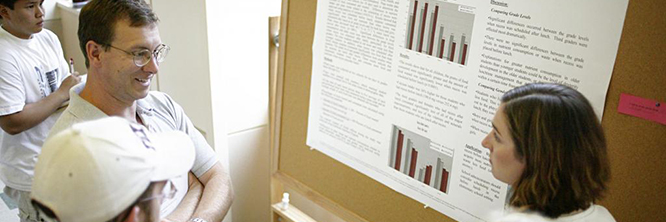Paleoseismic investigation of rupture in the northeastern Kittitas Valley, Washington
Document Type
Poster
Event Website
https://source2022.sched.com/
Start Date
16-5-2022
End Date
16-5-2022
Keywords
Seismology, Earthquakes, Faults
Abstract
Geologically based age constraints of past ruptures on active faults provide key inputs for seismic hazard assessment. In the Kittitas Valley (KV) of central Washington, a northwest trending fault scarp with ~1 m of relief, recently detected using Light Detection and Ranging (LiDAR) mapping, suggests that relatively recent earthquakes have occurred along the associated fault. The fault is likely an extension of the Dead Coyote Fault (DCF), an active fault that forms escarpments in Quaternary units across the northern KV. No large historical earthquakes (M>5) have been recorded in the KV. Additionally, there are no paleoseismological estimates for the timing of the most recent earthquakes on local faults, their recurrence, or their potential magnitude. Although the KV is a rural region with low population density, it is within 100 miles of the larger cities of Yakima and Wenatchee, the Hanford Nuclear Site, and multiple irrigation diversion and hydroelectric dams which could experience significant shaking in the event of a large-magnitude earthquake in the KV. Our investigation will trench across the fault scarp to investigate its paleoseismology and determine the age, magnitude, and recurrence of past earthquakes along the fault to aid in the regional seismic hazard analysis. This process includes topographic analysis and collecting ground penetrating radar (GPR) data to provide the ideal location for a trench, and then excavation will allow for detailed geologic mapping of subsurface layers, creating a high resolution photomosaic and collecting samples for radiocarbon or optically stimulated luminescence (OSL) dating.
Recommended Citation
Huddleston, Garet, "Paleoseismic investigation of rupture in the northeastern Kittitas Valley, Washington" (2022). Symposium Of University Research and Creative Expression (SOURCE). 56.
https://digitalcommons.cwu.edu/source/2022/COTS/56
Department/Program
Geological Sciences
Additional Mentoring Department
Geological Sciences
Additional Mentoring Department
Graduate Studies
Additional Mentoring Department
Funding from Central Faculty-Student Provost Research Grants
Poster
Huddleston, Garet SOURCE_Presentation.mp4 (17153 kB)
Video Presentation
Additional Files
Huddleston, Garet SOURCE_Poster.pdf (675 kB)Poster
Huddleston, Garet SOURCE_Presentation.mp4 (17153 kB)
Video Presentation
Paleoseismic investigation of rupture in the northeastern Kittitas Valley, Washington
Geologically based age constraints of past ruptures on active faults provide key inputs for seismic hazard assessment. In the Kittitas Valley (KV) of central Washington, a northwest trending fault scarp with ~1 m of relief, recently detected using Light Detection and Ranging (LiDAR) mapping, suggests that relatively recent earthquakes have occurred along the associated fault. The fault is likely an extension of the Dead Coyote Fault (DCF), an active fault that forms escarpments in Quaternary units across the northern KV. No large historical earthquakes (M>5) have been recorded in the KV. Additionally, there are no paleoseismological estimates for the timing of the most recent earthquakes on local faults, their recurrence, or their potential magnitude. Although the KV is a rural region with low population density, it is within 100 miles of the larger cities of Yakima and Wenatchee, the Hanford Nuclear Site, and multiple irrigation diversion and hydroelectric dams which could experience significant shaking in the event of a large-magnitude earthquake in the KV. Our investigation will trench across the fault scarp to investigate its paleoseismology and determine the age, magnitude, and recurrence of past earthquakes along the fault to aid in the regional seismic hazard analysis. This process includes topographic analysis and collecting ground penetrating radar (GPR) data to provide the ideal location for a trench, and then excavation will allow for detailed geologic mapping of subsurface layers, creating a high resolution photomosaic and collecting samples for radiocarbon or optically stimulated luminescence (OSL) dating.
https://digitalcommons.cwu.edu/source/2022/COTS/56

Faculty Mentor(s)
Walter Szeliga